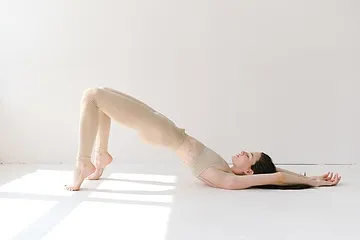Yoga is an ancient practice that has been around for thousands of years, originating in India. It has gained immense popularity in recent years, and for good reason. Yoga is a holistic practice that promotes physical and mental well-being through a combination of physical postures, breathing techniques, and meditation. It is accessible to people of all ages and fitness levels, making it an ideal practice for beginners.
Starting a yoga practice as a beginner can seem intimidating, but the benefits are numerous. Yoga can help to improve flexibility, strength, and balance, while also reducing stress and promoting relaxation. It can also improve your posture, help you sleep better, and even boost your immune system. With regular practice, yoga can help you become more mindful, present, and connected to your body and breath.
Whether you are looking to improve your physical health, reduce stress, or simply try something new, starting a yoga practice as a beginner can be a life-changing experience. With the right guidance, support, and mindset, anyone can reap the benefits of yoga, regardless of their experience level. So why not give it a try and see how yoga can enhance your physical and mental well-being?
What is Yoga?
Yoga is a holistic practice that originated in ancient India and has been around for thousands of years. The word “yoga” comes from the Sanskrit word “yuj,” which means to unite or yoke, representing the connection between the body, mind, and spirit.
At its core, yoga is a practice that seeks to cultivate awareness, mindfulness, and inner peace. It is a combination of physical postures, breathing techniques, and meditation, all designed to promote physical and mental well-being.
Physical postures, also known as asanas, are one of the key components of a yoga practice. These postures are designed to stretch and strengthen the body, improve flexibility, and increase circulation. There are hundreds of different asanas, ranging from simple poses that can be done by beginners to advanced poses that require years of practice.
Breathing techniques, also known as pranayama, are another important component of a yoga practice. These techniques involve controlling the breath in various ways to promote relaxation, calm the mind, and increase energy. Some common pranayama techniques include deep breathing, ujjayi breath, and alternate nostril breathing.
Meditation is the third component of a yoga practice. It involves focusing the mind on a specific object, such as the breath, a mantra, or an image, in order to cultivate a state of calm and inner peace. Meditation has been shown to reduce stress and anxiety, improve sleep, and enhance overall well-being.
Together, these three components of a yoga practice – physical postures, breathing techniques, and meditation – work together to create a holistic practice that benefits the body, mind, and spirit. By cultivating mindfulness and inner peace through yoga, practitioners can experience improved physical health, reduced stress and anxiety, and a deeper connection to themselves and the world around them.
Benefits of Yoga for Beginners
Yoga is an excellent practice for beginners to start with, as it provides numerous benefits for the body and mind. Here are some of the most significant benefits of yoga for beginners:
- Improved Flexibility: One of the most obvious benefits of practicing yoga is improved flexibility. Yoga poses involve stretching and lengthening the muscles, which can help to increase flexibility over time. This can be especially beneficial for beginners who may have tight muscles due to a sedentary lifestyle or lack of exercise.
- Increased Strength: Another benefit of practicing yoga is increased strength. Many yoga poses require holding the body in a particular position, which can help to strengthen the muscles in the arms, legs, and core. This can be particularly useful for beginners who may be looking to improve their overall strength and fitness level.
- Reduced Stress: Yoga has been shown to be an effective stress-reduction technique. The deep breathing and meditation involved in a yoga practice can help to calm the mind and reduce feelings of stress and anxiety. This can be especially helpful for beginners who may be feeling overwhelmed or anxious about starting a new practice.
- Improved Balance: Many yoga poses require balance and stability, which can help to improve overall balance and coordination. This can be particularly helpful for beginners who may be looking to improve their balance and prevent falls.
- Better Sleep: Yoga has been shown to improve sleep quality by reducing stress and promoting relaxation. This can be particularly helpful for beginners who may be experiencing difficulty sleeping due to stress or anxiety.
- Enhanced Mental Clarity: Yoga has been shown to improve mental clarity and focus by reducing stress and anxiety. This can be particularly helpful for beginners who may be looking to improve their overall cognitive function.
Overall, practicing yoga as a beginner can provide numerous benefits for both the body and mind. From improved flexibility and strength to reduced stress and better sleep, yoga is an excellent practice for beginners to explore.
Tips for Starting a Yoga Practice
If you’re new to yoga, starting a regular practice can feel intimidating. However, with the right mindset and a few practical tips, you can make the most out of your yoga journey. Here are some tips for starting a yoga practice:
- Start with a Beginner-Friendly Class: It’s important to choose a class that is specifically designed for beginners. This will help you learn the basics of yoga in a safe and supportive environment. Look for a class that focuses on foundational poses and includes modifications for beginners.
- Invest in the Right Gear: While you don’t need to spend a lot of money on fancy yoga gear, investing in a good quality yoga mat can make a big difference in your practice. A mat with good grip and cushioning can help you feel more comfortable and confident during your practice.
- Listen to Your Body: It’s important to listen to your body and be gentle with yourself as you start your yoga practice. Don’t push yourself too hard, too fast. Instead, focus on finding a balance between challenging yourself and respecting your body’s limitations. If a pose feels uncomfortable or painful, modify it or skip it altogether.
- Practice Consistently: Consistency is key when it comes to building a yoga practice. Start by committing to practicing a few times a week, even if it’s just for a few minutes. As you get more comfortable with the practice, you can gradually increase the amount of time you spend on the mat.
- Create a Supportive Environment: Surround yourself with a supportive community of fellow yogis. This can include attending classes at a studio or gym, practicing with a friend, or even joining an online yoga community. Having a support system can help you stay motivated and accountable.
- Embrace the Journey: Remember that yoga is a journey, not a destination. Don’t worry about being perfect or getting everything right the first time. Instead, focus on enjoying the process and being kind to yourself along the way.
By following these tips, you can start a yoga practice that is both enjoyable and sustainable. With time and dedication, you can experience the many physical and mental benefits that come with a regular yoga practice.
How to Find a Yoga Class
Finding the right yoga class as a beginner can be overwhelming, especially if you’re not sure where to start. Here are some tips to help you find a yoga class that is suitable for beginners:
- Look for Classes Labeled as “Gentle” or “Beginner-Friendly”: Many yoga studios and gyms offer classes specifically designed for beginners. These classes may be labeled as “gentle” or “beginner-friendly,” and they typically focus on foundational poses and basic techniques. Attending these classes can help you build a strong foundation for your practice.
- Read Reviews: Online reviews can be a helpful way to get a sense of what a yoga class is like before you attend. Look for reviews that specifically mention whether the class is suitable for beginners. You can also ask for recommendations from friends or family members who practice yoga.
- Visit Multiple Studios: Don’t be afraid to visit multiple studios before settling on one. This can help you get a sense of the different styles of yoga and teaching styles available. Many studios offer discounted or free classes for first-time students, so take advantage of these offers to try out different classes.
- Consider the Teacher’s Experience: Look for teachers who have experience working with beginners. They should be able to offer modifications and adjustments to help you get the most out of your practice. You can also look for teachers who have completed specific training programs for teaching beginners.
- Choose a Convenient Location and Schedule: Finally, consider the location and schedule of the class. Choose a studio that is conveniently located and offers classes at times that work for your schedule. This can help you build a consistent practice and make it easier to attend classes regularly.
By following these tips, you can find a yoga class that is suitable for beginners and start your yoga journey with confidence. Remember that finding the right class may take some time, so be patient and keep trying until you find a class that feels comfortable and supportive.
Common Yoga Poses for Beginners
Yoga is a practice that involves physical postures or poses, also known as asanas. As a beginner, it’s important to start with basic poses that help you build strength, flexibility, and awareness of your body. Here are some common yoga poses for beginners:

1. Downward-Facing Dog (Adho Mukha Svanasana): This pose is a foundational yoga pose that helps stretch and strengthen the entire body. To practice this pose, start on your hands and knees, with your hands shoulder-width apart and your knees hip-width apart. Lift your hips up and back, straightening your arms and legs, and form an inverted V-shape with your body.

2. Warrior II (Virabhadrasana II): This pose helps build strength and stability in the legs and hips. To practice this pose, start by standing with your feet hip-width apart. Step your left foot back about three to four feet, turning your left foot out at a 90-degree angle. Bend your right knee to a 90-degree angle, keeping your knee stacked over your ankle. Extend your arms out to the sides, with your palms facing down.

3. Child’s Pose (Balasana): This pose is a gentle resting pose that helps release tension in the back, neck, and shoulders. To practice this pose, start on your hands and knees, with your hands shoulder-width apart and your knees hip-width apart. Lower your hips back toward your heels, extending your arms forward and resting your forehead on the groun

4. Tree Pose (Vrikshasana): This pose helps improve balance and focus. To practice this pose, start by standing with your feet hip-width apart. Shift your weight onto your left foot and place your right foot on your left thigh, with your toes pointing down. Bring your hands together in front of your heart and focus your gaze on a fixed point in front of you.

5. Bridge Pose (Setu Bandhasana): This pose helps stretch the chest, neck, and spine, as well as strengthen the glutes and lower back. To practice this pose, start by lying on your back with your knees bent and your feet hip-width apart. Press your feet into the ground, lift your hips up, and interlace your hands underneath your back.
Remember to practice these poses mindfully and with awareness of your body. Start with a few minutes of practice each day and gradually increase the length and intensity of your practice as you become more comfortable with the poses. With consistent practice, you’ll build strength, flexibility, and confidence in your yoga practice.
Breathing Techniques for Beginners
Breathing techniques, also known as pranayama, are an important component of a yoga practice. They help calm the mind, reduce stress, and increase oxygen intake. Here are some basic breathing techniques for beginners:
- Deep Breathing: This technique involves breathing deeply into the belly, allowing the diaphragm to expand fully. To practice deep breathing, sit in a comfortable position with your hands resting on your belly. Inhale deeply through your nose, filling your belly with air, and exhale slowly through your nose, emptying your belly completely.
- Ujjayi Breathing: This technique involves breathing through the nose while constricting the back of the throat, creating a slight audible sound. It helps build heat in the body and deepen the breath. To practice ujjayi breathing, sit in a comfortable position and inhale deeply through your nose, then exhale through your nose while constricting the back of your throat.
- Alternate Nostril Breathing: This technique involves breathing through one nostril at a time, using your fingers to block off one nostril at a time. It helps balance the body and calm the mind. To practice alternate nostril breathing, sit in a comfortable position and use your right hand to block off your right nostril, inhaling deeply through your left nostril. Then switch, using your left hand to block off your left nostril and exhaling through your right nostril.
- Three-Part Breath: This technique involves breathing deeply into three parts of the lungs: the lower, middle, and upper. It helps increase oxygen intake and calm the mind. To practice three-part breath, sit in a comfortable position and inhale deeply into your belly, filling your lower lungs with air. Then, inhale into your ribcage, filling your middle lungs with air. Finally, inhale into your chest, filling your upper lungs with air. Exhale slowly, releasing the breath in reverse order.
Remember to practice breathing techniques mindfully and with awareness of your body. Start with a few minutes of practice each day and gradually increase the length and intensity of your practice as you become more comfortable with the techniques. With consistent practice, you’ll improve your breathing capacity, reduce stress, and feel more relaxed and centered in your yoga practice.
Modifications and Props
Modifications and props are essential tools for beginners to make yoga poses more accessible and comfortable. They can help you maintain proper alignment, prevent injury, and allow you to fully experience the benefits of each pose. Here are some tips for modifying poses and using props:
- Use blocks: Blocks can be used to bring the ground closer to you and provide support for your hands or feet. For example, if you find it difficult to reach the ground in a standing forward bend, place a block under your hands to bring the ground closer to you.
- Use straps: Straps can be used to help you reach certain poses that require more flexibility. For example, if you find it difficult to reach your toes in a seated forward bend, use a strap to loop around your feet and hold onto the ends.
- Modify poses: Modifying poses can make them more accessible and comfortable. For example, if you find it difficult to sit cross-legged, sit on a folded blanket or a bolster to elevate your hips.
- Listen to your body: It’s important to listen to your body and modify poses or use props as needed. If you experience discomfort or pain in a pose, back off or modify the pose to make it more accessible.
- Use props for support: Props can also be used for support in restorative or gentle yoga practices. For example, use bolsters or blankets to support your body in a relaxing pose like savasana.
Remember, yoga is a personal practice, and it’s important to modify poses and use props to fit your individual needs and limitations. By using modifications and props, you can make your yoga practice more accessible, enjoyable, and beneficial for your body and mind.
Yoga Etiquette
Yoga etiquette is an important aspect of practicing yoga in a group setting. Here are some tips on yoga etiquette to ensure a positive and respectful experience for everyone:
- Arrive on time: It’s important to arrive on time for class to avoid disrupting the teacher and other students. Arriving late can also cause you to miss the warm-up and introduction, which is an essential part of the practice.
- Turn off your phone: Make sure to turn off your phone or put it on silent before class. The sound of a ringing phone or notification can be distracting and disruptive to the practice.
- Respect the teacher: Yoga teachers are trained professionals who are there to guide you through the practice. It’s important to respect their instructions and follow their cues during class. If you have any questions or concerns, wait until after class to ask the teacher.
- Respect other students: Yoga is a communal practice, and it’s important to respect the space and energy of other students in the class. Try to avoid talking during the practice, and be mindful of your movements to avoid bumping into or crowding other students.
- Clean up after yourself: If you borrow a mat or props from the studio, make sure to clean and put them away after class. This shows respect for the studio and other students who may use the equipment after you.
By following these simple tips, you can ensure a positive and respectful experience for yourself and other students in the yoga class. Remember, yoga is not just a physical practice, but also a practice of mindfulness, compassion, and respect.
Conclusion
In conclusion, starting a yoga practice as a beginner can offer numerous benefits for both your physical and mental health. Yoga can help improve your flexibility, strength, balance, and reduce stress and anxiety. It’s a practice that can be modified to fit your individual needs and limitations, making it accessible for people of all ages and fitness levels.
If you’re interested in starting a yoga practice, there are many beginner-friendly classes and resources available to help you get started. By investing in the right gear, listening to your body, practicing consistently, and using modifications and props as needed, you can make your yoga practice comfortable, accessible, and enjoyable.
Incorporating yoga into your daily routine can be a great way to take care of your physical and mental health, and it’s never too late to start. So why not give it a try? You may be surprised at the benefits it can bring to your life. Remember, the key to a successful yoga practice is consistency, patience, and an open mind.





























